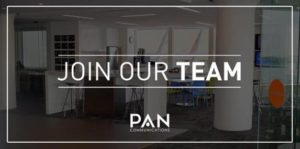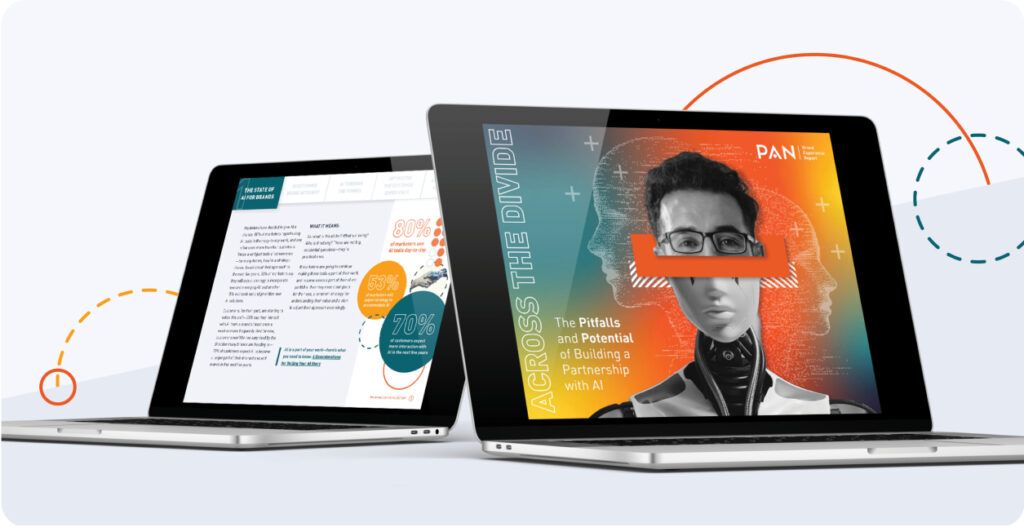With the rise of integrated marketing and PR, single-channel communication strategies are almost obsolete. Customers are demanding a cohesive journey on their path to purchase. As consumer expectations change, so do the demands on the PR and communications professional. They must adapt quickly to the ever-changing world of integrated marketing and the skill set required to keep up. So too must agencies in order to attract and retain top talent to their team.
PR and communication pros should prioritize their needs and wants in terms of agency profiles. Do they have proper staff training and development programs in place? Can you grow your integrated skills inside and outside agency walls with their support? But don’t stop there. Education and passion are important, but so are things like work-life balance, office culture and career growth. How do you rank what’s important to you and does that align with the agency’s mission, vision and values?
Doing a deeper dive into what makes an agency tick – from how their company is organized to collaboration opportunities to community based activities – will help you answer the question: Is this agency and its culture the right choice for me and my career?

Source: Pexels.com under CC license
The Evolution of Agency Departments, Skillsets & Career Growth
The Development and Demand for Integrated Communications
Depending on who you ask, public relations has been around for over 100 years or for thousands of years. Socrates, Plato and Aristotle taught the art of persuasion through rhetoric. So, as long as there have been humans working to persuade others, there has been the need to communicate and an evolving method for doing so. The age of print was a game changer, as was the subsequent age of mass media, modern newspapers and journalism.
Early digital marketing adopters quickly saw the synergy between PR and social media. Over time, the channels merged as the skill sets involved – content creation and relationship building – were synergistic.
Eventually agencies started to look at even more ways to expand yet integrate their service offerings. With an insatiable demand for content and media relations expanding to include influencers, analysts and bloggers, an integrated approach became the norm as a marketing best practice.
What does this mean for you? Ensuring your employer/agency invests in your professional development and keeping your skills current is paramount. As single-channel communication strategies are almost obsolete, so are communications professionals who work in silos or lack the ability to manage campaigns on multi-distribution channels.
Investing in employee training and development benefits both the agency and the staff. It allows the agency to aggressively pursue new growth opportunities requiring the latest and greatest know-how, while also benefiting the communications pros who broaden their skills. It’s a win/win that leads to future growth for both parties.
The Reengineering of the Department
Departments, job title and responsibilities are changing fast in today’s fast-moving business environment and marketing sphere. Being customer centric is a top priority for most brands today, but to meet expectations brands must collaborate between departments, utilize multi-channel strategies, and inject their messaging with even more creativity and innovation while remaining authentic, trustworthy and human.
In order to effectively measure and prove ROI and revenue growth, organizations need access to integrated data – from teams including PR, social media, demand generation, etc. Agencies are a strategic resource that brands should be utilizing to better facilitate this measurement and integration across teams.
Only 56% of companies surveyed say their brand has kept pace with the evolution of marketing in the digital age
Departments are operating and coordinating with each other in different ways. C-suite executives are being invited to marketing meetings. Marketers are joining in on HR, sales, CR, regional and global department meetings. They’re setting goals that align with each department and the overall business goal.
New roles are springing up every day. Outdated organization charts are being thrown out the window as new cross-functional, cross-departmental job titles and responsibilities become the norm. If you are willing to change and adapt to these new norms, with an integrated approach to marketing, you’ll find that opportunities are endless for career growth and skill set development.
What Does it Mean to Have an Integrated Skill Set?
So, what exactly is an integrated skill set? Gone are the days of single-channel marketing campaigns, traditional versus digital, earned versus paid. Now marketing pros need to coordinate between social media, public relations, inbound marketing and creative efforts. That takes a special talent, and one that you’ll want your agency/employer to support and develop.
Only 14% of marketers integrate campaigns across all channels.
Success stems from having a unified effort. You can amplify the nature of your client’s message by reaching the right channels and audience for greater impact and brand awareness. Knowing how and when to integrate other communication channels and third-party relations is the key to success. Speed, agility and efficiency all become important here. No need to struggle managing multiple agencies or teams under separate roofs. Running a unified team with common goals will yield sustained success.
Even if you find yourself at an agency where teams are siloed, there can be still be opportunities for integration and collaboration. Look for them.
How Do You Achieve and Master a Range of Integrated Marketing & PR Skills?
Agencies can’t afford to lose out on micro-moments of connection. They need to act fast and deliver to their clients what their customers are expecting. This means agencies are now leveraging tiered, complex, integrated strategies that include a mix of earned, paid, influencer and inbound content marketing services all working together.
Successful agencies are committed to a culture of learning, and a solid training and development program for their team members. If you are looking to keep your skills current and marketable, look for an agency that makes professional development a priority.
Take it a step further. Investigate if an agency you are thinking of joining has a defined training program – or do they even have one at all? Then consider your personal preferences and learning style. What do they offer? Workshops? One-to-one programs? Align your learning style with an agency that offers something similar.
Mentor programs are also valuable for communications and PR professionals. Participating in a mentor program will rapidly increase your internal agency engagement and will accelerate your career.
But learning is an internal process as well. Invest in yourself. Go above and beyond what your agency has to offer. Immerse yourself in your industry so that you’re paving multiple paths for yourself, realizing multiple solutions to one challenge. This will let you discover new and out-of-the-box ideas that you wouldn’t otherwise get just by staying within the walls of your own agency.
Defining a ‘People-First’ Approach to Agency Life
What does a ‘People-First’ Approach Mean for You and Your Career Development?
We’ve all heard the phrase “work-life balance.” But how many companies actually talk the talk AND walk the walk? Look to join an agency with a “People-First” approach.
It’s not just about the clients and the bottom line. An agency’s CEO should be looking at the entire process and everyone who is involved. The people are the business, so you best foster those relationships first. By taking a “People-First” approach, businesses can reduce burnout and stress, and benefit from increased productivity, collaboration, and creativity.
The process that agencies use to acclimate new team members is key. During an interview, ask for their process for onboarding, their commitment to training and development, and any mentorship programs they offer. It’s also good to take a look at a company’s mission, vision and values to see if they resonate with your own.
Mission, Vision, Values – Are They Aligned?
PAN Communications developed its vision, mission and values with its employees at its core. We believe our employees shape our organization by sharing ideas and moving them forward. Our values are born from within. While embracing individuality, we share a common voice when describing what makes PAN a special place. Our vision, mission and values are a collective voice of the people of PAN.
So what should you look for when assessing an agency?
- Mission: A mission statement defines why a company or organization exists in the first place. Your current or future agency should have a mission that you believe in and feel passionate about. If it resonates with you, that’s a good sign that the agency could be the right fit for you.
- Vision: An agency’s future goals and plans including new markets, global expansion etc. should pique your interest if you’re searching for or choosing a new agency. Look for indicators within this plan that showcase the agency’s thoughtfulness and determination to not only succeed in a competitive market but surpass competitors while doing so.
- Values: Does the agency’s values align with yours? Prioritize what you value most at your job and seek out agencies that maintain and manage their values. Key indicators include longevity, Glassdoor reviews, word of mouth and other forms of recommendations.
Is this in sync with your motivation? Purpose? Goals? If so, you’ll find yourself with less turnover time at an agency – if any.
Collaborative Teams Lead to a Creative and Cohesive Workforce and Office Culture
Collaboration starts with your immediate team. Understanding how to best work together, and overcoming obstacles like time zone challenges and technology preferences, is a good place to start. Now look to your agency to see how these challenges are managed.
With all of the workplace collaboration tools available today – from Skype to Zoom to WhatsApp – the “four walls” of a traditional office have all but melted away.
Technology is a convenient way to continuously emphasize culture and corporate vision. Both are crucial to get your entire team on the same page. Technology also is a means to encourage employees to collaborate across distances and organizational boundaries. Video, email, conference calls, instant messaging, collaboration software and other technologies are necessary tools in your arsenal.
Keep the lines of communication open, even with those working in other offices. Skype (or other IM tools) should be utilized and team members encouraged to share successes in real-time. Don’t discount the importance of “friendly banter” in building great teams.
That being said, beware of email overload. Take “back and forth” conversations off of email and into collaboration tools, only including the team on details that directly impact their work.
Time zones can actually prove to be an advantage. Having teammates across time zones means you can pass responsibilities to those who still have additional hours in their workday.
If an agency can foster collaboration for each and every team, they’ll see output that is more creative and cohesive. It provides a better experience internally and for their clients.
The Power of Employee Advocacy
When you empower your employees, you empower your brand. Employee advocacy programs are a powerful way to build a strong internal community. The benefits of working at an agency with an employee advocacy program include:
- PR for yourself: You’re incentivized to leverage your profile and expertise on your social channels. Looking to become the next PR or marketing influencer? An employee advocacy program can be the fuel to this professional end goal.
- A chance to showcase additional passion projects: Go above and beyond your day-to-day and dive into new technologies, tools or services. Showcase this knowledge by writing blog posts, contributed articles or even posting to your LinkedIn channel.
Defining a ‘People-First’ Approach to Agency Life
Perks, Benefits & Beyond
A majority of agencies have their “standard” benefits and perks package. A 401K, sick leave, medical and dental insurance, etc. But how many agencies look above and beyond those core offerings? How many agencies look to their employees to find out what they value?
The Importance of Maintaining a Work-Life Balance
Having a work-life balance is a two-way street. You must work hard, prioritize and grow your career, but on the flip-side, agencies should be looking to foster their employees so they can sustain a work-life balance.
According to Forbes, the term “work-life balance” has yet to lose its buzz. This is partially due to the dominating presence of millennials in the workforce. Employers have been putting in a tremendous effort trying to determine the best way to appeal to millennial workers. With the millennial generation of workers projected to take up 75% of the workforce by 2025, many leaders think it’s time to redefine what work-life balance looks like.
The benefits of doing so are well documented. Maintaining work-life balance helps reduce stress and helps prevent burnout in the workplace. Chronic stress is one of the most common health issues in the workplace. It’s linked to a higher risk of depression, anxiety and insomnia.
A good work-life balance includes investment in health and wellness opportunities, having flex days – working from home or changing up hours and weaving in group activities. PAN makes health and wellness a top priority. Whether it’s bringing in meditation specialists or organizing weekly runs, PAN is always thinking of ways to encourage wellness.
59% of employees say that health and wellness benefits are important for increasing loyalty to their employer. (MetLife)
It’s important for employers to realize that work-life balance is about more than just hours. Besides promoting flexibility, employers should also strive to improve the overall workplace experience for their employees. Prioritizing a healthy culture and cultivating a happy workplace environment promotes work-life balance.
Giving Back to Your Community
Agency philanthropy and Corporate Social Responsibility (CSR) is more than just volunteering. It’s about giving back to your entire community.
Whether you’re at an agency or searching for one, look to programs that go beyond a volunteer day here or there. They should be looking at the bigger picture – one that reflects the passions of their employees. Volunteering in all shapes and forms strengthens our communities, brings people together and provides us with valuable experience and insight.
For instance, PAN has made a commitment to philanthropy coast to coast, by supporting causes to fight back against youth homelessness in all of our communities. PAN promotes volunteerism as a core company value. Employees volunteer to lend their time and talents for organizations in multiple communities.
Staff who have volunteered report that it’s an opportunity to connect and team building with colleagues, and that it provided an overwhelming sense of happiness. Now that’s a work benefit that’s hard to quantify.
Conclusion
Growing your integrated marketing and PR career doesn’t happen overnight. It takes time to gain that knowledge towards an improved skill set and develop those communication and management best practices. Whether you end up climbing the ladder at your current agency or looking elsewhere, make sure you’re surrounded by a community of trusted and talented people that will help get you there.



